Below is a selection of projects, summaries, and links to final reports.
Ashland Climate and Energy Survey

SOURCE worked in conjunction with Geos and the City of Ashland to conduct a public opinion poll of Ashland citizens regarding attitudes and actions related to climate change. A survey was constructed and mailed to 2,000 Ashland residents and 1,078 valid responses were received. See the report included here for all the findings from the research.
Report and Flyer:
City of Ashland: Downtown Ordinances Survey
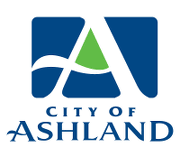
The City of Ashland hired SOURCE to evaluate the effectiveness of new city ordinances on smoking, soliciting diners, soliciting ATM users, and blocking the sidewalk in the downtown corridor. SOURCE did a survey of downtown businesses to determine if they saw changes in behavior from the summer prior to the implementation of the ordinances to the summer after the ordinances were put into place. The results show that while the ordinances were successful in eliminating the behaviors in most areas of the downtown corridor, there were also unintended consequences.
Report:
Oregon Wine Board: Winery and Vineyard Production Census

SOURCE has been generating the Annual Oregon Vineyard and Wine Production census since 2011. The vineyard and winery census is comprised of production data gathered from vineyards and wineries across the state. Data are compiled and aggregated culminating in a final report, which includes statistics on vineyard and winery production of fifteen varieties across the five major growing regions within Oregon as well as sales data.
Reports:
- 2011 Oregon Winery Production Report
- 2012 Grape Price Summary
- 2012 Vineyard and Winery Production Report
- 2013 Grape Price Summary
- 2013 Vineyard and Winery Production Report
- 2014 Vineyard and Winery Production Report-includes final Grape Price Summary
- 2015 Vineyard and Winery Production Report-includes final Grape Price Summary
- 2016 Vineyard and Winery Production Report-includes final Grape Price Summary
Ashland Forest Resiliency
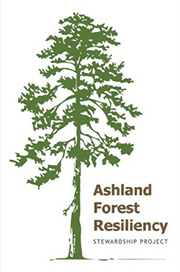
This was a two-year project that involved an initial large public opinion mail-in survey measuring beliefs and attitudes about forest conditions and management practices in the Ashland Creek. A total of 597 people completed the first questionnaire, and the primary finding was that Ashland residents support fuel reduction and restoration goals, including the use of commercial thinning to achieve those goals. Additionally, a follow-up email survey was conducted with a subset of the first group (124 completed responses), which assessed beliefs and attitudes about forest conditions and management practices in the Ashland Creek watershed. This second report provides evidence of increased support for the fuel reduction and restoration efforts in the Ashland watershed following the implementation of the Ashland Forest Resiliency Project, which included commercial thinning. Both reports are included here.
Head Start: Health Literacy Evaluation
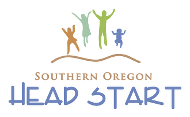
Over a four-year period, SOURCE worked with Southern Oregon Head Start (SOHS) to evaluate an innovative health literacy program for Head Start families. This was a long-term partnership and involved an iterative process of program development. SOURCE created a health behaviors and knowledge survey that was administered to Head Start families before the health literacy class and again five months later. The results of the survey were analyzed by SOURCE to determine program effectiveness and SOHS made subsequent modifications to the health literacy program based on the evaluation outcomes.
Report:
City of Ashland: North Main Street Redesign

The City of Ashland hired SOURCE to conduct a public opinion poll of Ashland citizens regarding the narrowing of North Main Street (commonly known as the “Road Diet”). We constructed a mail-in survey and analyzed the 552 responses. The results were presented to the Ashland City Council to inform their final decision on whether to maintain the street reconfiguration. See the report included here for all the findings from the research.
Bureau of Land Management: Table Rocks Public Input
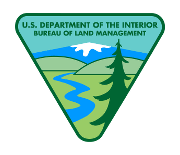
The Bureau of Land Management hired SOURCE to gather public input for the land management plan for the Upper and Lower Table Rocks. An interviewer-administered survey was developed to determine how the Table Rocks are used and managed, as well as to assess opinions on management proposals that may be put forth by the BLM. During the spring and summer of 2011, the SOURCE research team administered the survey to 330 Table Rocks recreational users. The results are included in the Table Rocks Final Report.
Report:
Rogue Valley Fire Prevention Cooperative: Public Opinion Regarding Wildfire
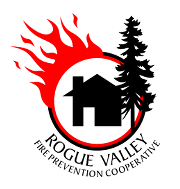
SOURCE worked with the Rogue Valley Fire Prevention Cooperative (RVFPC) over a two-year period, to survey people in the Rogue Valley and Josephine County regions of southern Oregon. RVFPC was interested in public knowledge, attitudes, and practices with respect to the wildfire threat in the local area. Over the two years, SOURCE received and analyzed 2,705 completed mail-in surveys and the findings were presented to local fire chiefs and the Oregon Department of Forestry. The final report was featured on the State of Oregon homepage.
Rogue Community College: Math Curriculum Evaluation

Rogue Community College (RCC) received two separate NSF grants to develop and implement a new basic and a new advanced career and technical math curriculum for high school and community college classes. SOURCE has provided the outside evaluation of the effectiveness of the new curricula. This has involved an attitude and knowledge survey administered to students at the beginning and end of the class, and interviews with students and teachers. In addition, SOURCE has analyzed math student outcomes in course completion, subsequent GPA and graduation rates.
Jackson County: Gold Ray Dam

SOURCE was part of a multi-agency team that measured the impact of the removal of the Gold Ray Dam from the Rogue River. The main focus of the SOURCE research work was the recreational and economic impact of dam removal, and we did a pre-assessment before the removal and a post-assessment two years later. We used a multi-pronged approach, including interviewing recreational users at various places along the river, determining utilization of the river by keeping extensive counts of recreational users, interviewing fishing guides and river rafting companies, and analyzing property values along the Rogue River.
Reports:
SOU Economic Impact

SOURCE was appointed by the SOU President to determine the economic impact of Southern Oregon University on Jackson and Josephine Counties and the state of Oregon.
Jackson County Department of Health: Ashland Childhood Immunization

This project was a qualitative and quantitative study of childhood immunization rates in Ashland, Oregon. The first component was a statistical analysis of the vaccine records of school-age students in order to understand the differences between partial and full vaccination rates in the community. This information also enabled the Department of Health to model a measles outbreak to enhance preparation if such an event were to occur. The second aspect of the analysis was in-depth interviews with 22 Ashland parents, which focused on how they made decisions regarding vaccination.
Rogue Valley Food System Network

Organizations across the Rogue Valley are engaged in a multi-year grant-funded effort to increase-out the percentage of food consumed that is grown in Jackson or Josephine counties. Our research team is evaluating how successful Rogue Valley Food System Network is in meeting this goal. We are collecting data to establish the current state of the agricultural economy in Jackson and Josephine Counties, as well as conducting a long-term assessment of changes in agricultural production and sales. The results will assist collaborating organizations in assessing the condition of the food system as it relates to increasing locally consumed agricultural products.




